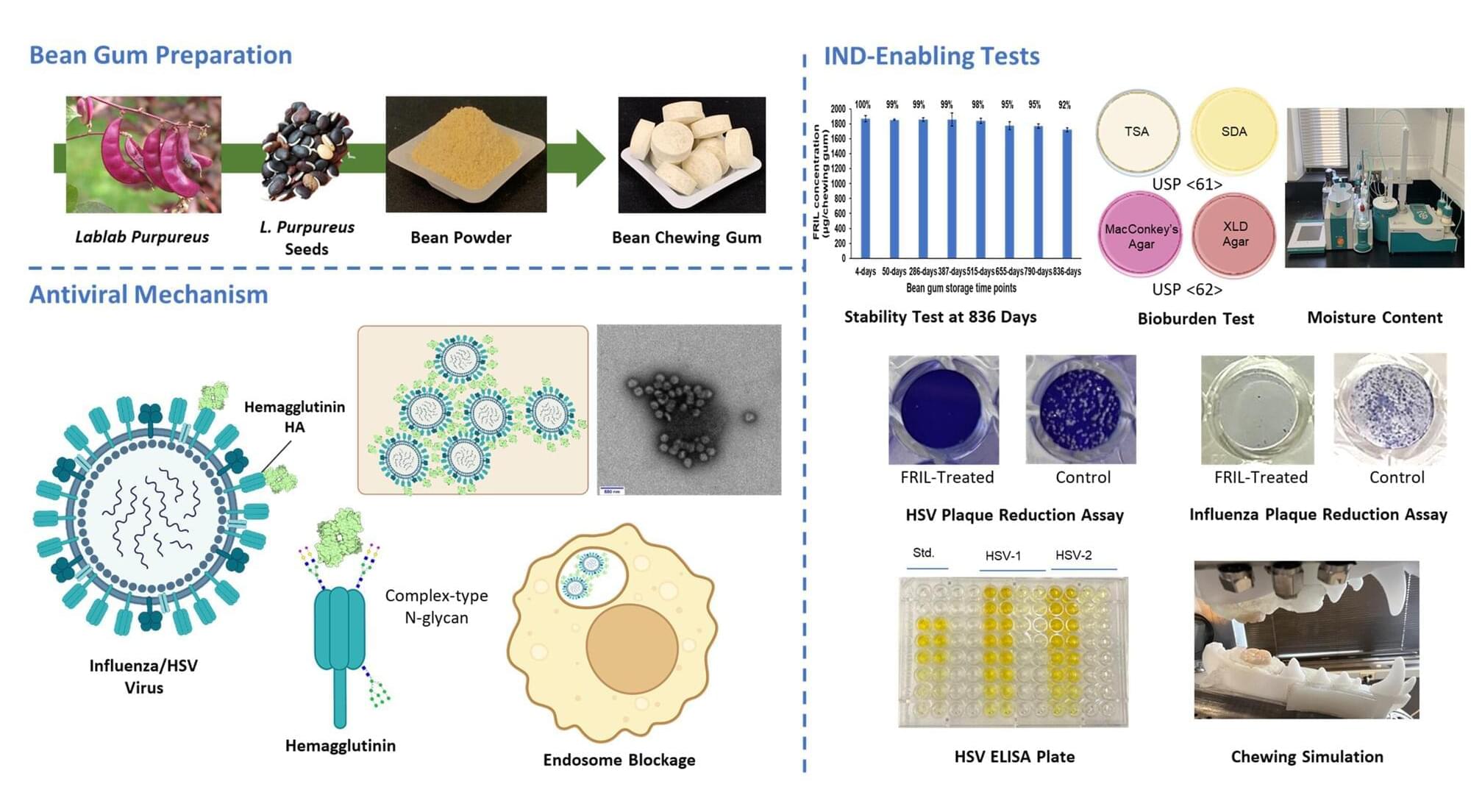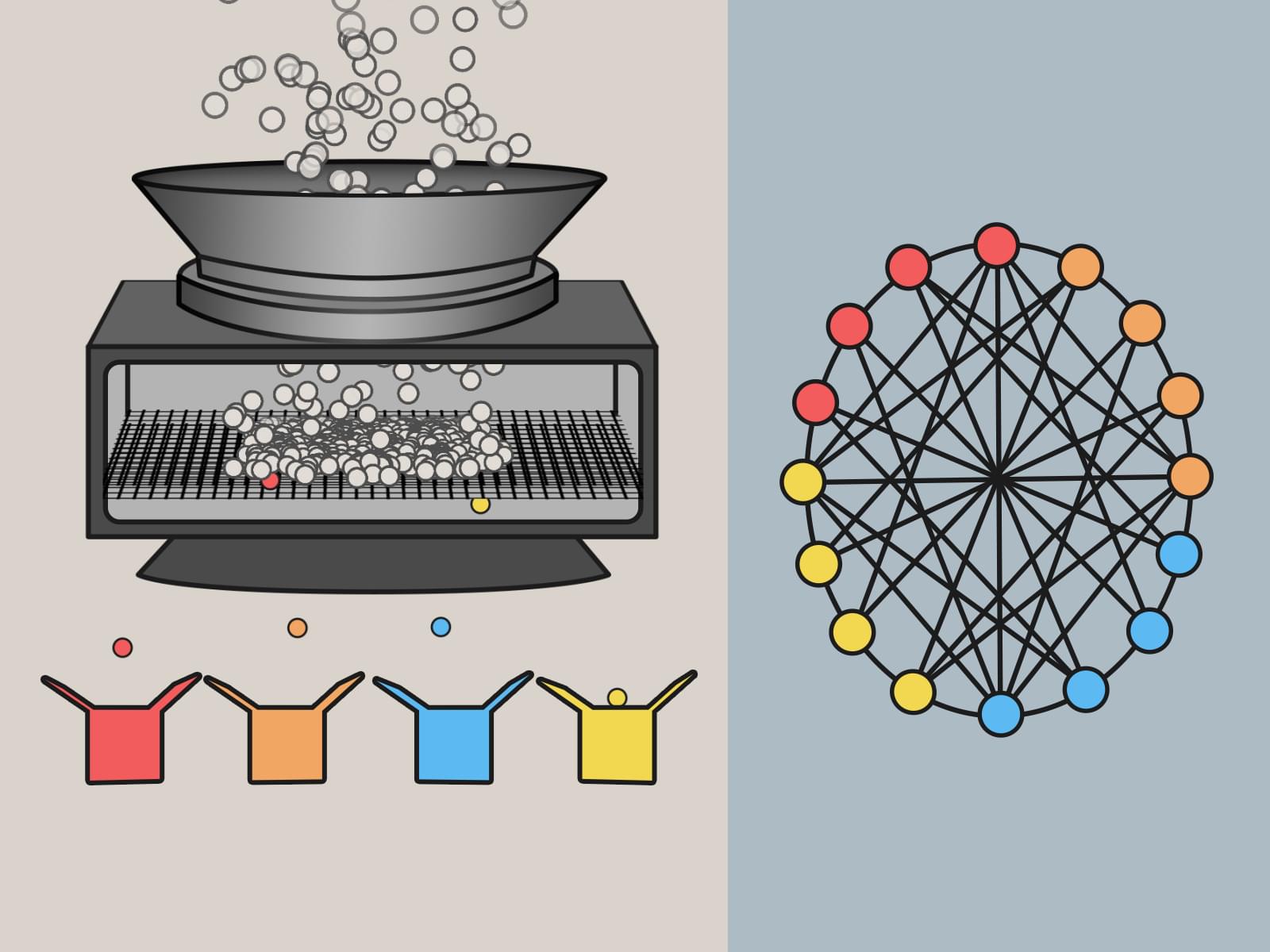Scientists in the U.K. have developed a new material that may allow them to grow teeth in the lab, which could provide an alternative to fillings and dental implants someday.




In today’s interconnected world, infectious diseases pose an escalating threat, as demonstrated by the coronavirus pandemic and outbreaks of H1N1, SARS, Ebola, Zika, and H5N1 (bird flu) viruses—all of which have had significant global health and economic impacts.
But more common viral diseases also contribute to global health challenges and economic costs. For example, seasonal influenza epidemics occur annually, causing a substantial global disease burden and economic losses exceeding $11.2 billion each year in the United States alone. Meanwhile, herpes simplex virus-1 (HSV-1), spread primarily through oral contact, infects over two-thirds of the global population and is the leading cause of infectious blindness in Western countries.
Low vaccination rates for influenza viruses and the lack of an HSV vaccine underscore the need for a new approach—one that targets reducing viral loads at the sites where transmission occurs. And for viruses like these, which are transmitted more efficiently through the mouth than the nose, this means focusing on the oral cavity.

In a new study, researchers from the University of Copenhagen have successfully created stem cells that are better at developing into other cell types, like a younger, fitter version of themselves—by changing their diet. These stem cells are better than normal stem cells at creating specialized cells like liver, skin or nerve cells, which is a core trait of stem cells.
The study, “Altering metabolism programs cell identity via NAD+-dependent deacetylation” has been published in The EMBO Journal.
“We show that by changing their diet, the stem cells can rejuvenate and turn into ‘super stem cells.’ It forces them to metabolize their energy in a different way than they normally would, and that process essentially reprograms the stem cells,” says first author Robert Bone, Assistant Professor at the Novo Nordisk Foundation Center for Stem Cell Medicine, also known as reNEW.


CINCINNATI (WKRC) — A commonly prescribed sleeping pill could be a powerful tool in preventing Alzheimer’s disease, according to recently published research.
The study, published in Annals of Neurology, was born from the long-standing scientific belief that poor sleep increases a person’s risk of Alzheimer’s. This belief came from the fact that sleep clears out wasteful proteins like amyloid-beta and tau, which Alzheimer’s patients often have a high build up of.
The study examined suvorexant, a sleeping pill regularly prescribed for insomnia, and observed its effects on clearing those waste proteins.

PRESS RELEASE — Quantum computers promise to speed calculations dramatically in some key areas such as computational chemistry and high-speed networking. But they’re so different from today’s computers that scientists need to figure out the best ways to feed them information to take full advantage. The data must be packed in new ways, customized for quantum treatment.
Researchers at the Department of Energy’s Pacific Northwest National Laboratory have done just that, developing an algorithm specially designed to prepare data for a quantum system. The code, published recently on GitHub after being presented at the IEEE International Symposium on Parallel and Distributed Processing, cuts a key aspect of quantum prep work by 85 percent.
While the team demonstrated the technique previously, the latest research addresses a critical bottleneck related to scaling and shows that the approach is effective even on problems 50 times larger than possible with existing tools.

Should you step away from the chicken wings?
For years, the conventional wisdom has been to swap out red meat for white meats like chicken and poultry to help reduce health risks like increased cholesterol, cancer, and inflammation —not to mention get a more budget-friendly protein source. But a new study links eating chicken and other poultry with a significantly increased risk of dying from gastrointestinal cancer and all other causes.
But before you put down the chicken—or roll your eyes and get back to your chicken Caesar—check out the details of the study, and what a dietitian says you should do if you’re concerned.

Understanding the origin of heavy elements on the periodic table is one of the most challenging open problems in all of physics. In the search for conditions suitable for these elements via “nucleosynthesis,” a Los Alamos National Laboratory-led team is going where no researchers have gone before: the gamma-ray burst jet and surrounding cocoon emerging from collapsed stars.
As proposed in an article in The Astrophysical Journal, high-energy photons produced deep in the jet could dissolve the outer layers of a star into neutrons, causing a series of physical processes that result in the formation of heavy elements.
“The creation of heavy elements such as uranium and plutonium necessitates extreme conditions,” said Matthew Mumpower, physicist at Los Alamos. “There are only a few viable yet rare scenarios in the cosmos where these elements can form, and all such locations need a copious amount of neutrons. We propose a new phenomenon where those neutrons don’t pre-exist but are produced dynamically in the star.”

The willingness of the 4f orbitals of lanthanide metals to participate in chemical reactions is as rare as their presence in Earth’s crust. A recent study, however, witnessed the 4f orbital in a cerium-based compound actively participate in bond formation, triggering a unique chemical reaction.
The researchers observed that a cerium-containing cyclic complex formed a 4f-covalent interaction, leading to a ring-opening isomerization from cyclopropene to allene. The findings are published in Nature Chemistry.
Lanthanides are heavy, rare-earth metallic elements, occupying positions 57 through 71 in the periodic table —from lanthanum to lutetium—and are widely used in modern technologies ranging from electronics to clean energy. In nature, these elements are usually found together in their ore form and separating them using current methods is extremely challenging and energy-intensive. Understanding how these elements bond or interact with other atoms at an electronic level could help us to distinguish between lanthanides and design effective separation strategies.